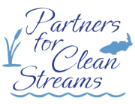 On February 2nd we celebrate wetlands and their enormous benefits to our water quality. They harbor rich biodiversity, help with floodwater storage, and help provide nutrient filtration for our rivers. In Northwest Ohio, we have an extra reason to celebrate because we live in the Great Black Swamp. Pre-drainage, this extensive nearly one-million-acre glacial-fed wetland, surrounded the Northwest Ohio region, giving life to robust and complex ecosystems. In our region, we have rare wet prairie ecosystems, vernal pools, and sand dunes that seemingly rise out of an expanse of wet fields. While today most of the biodiversity is lost, slowly, restoration practices are reviving critical areas of the region.
On February 2nd we celebrate wetlands and their enormous benefits to our water quality. They harbor rich biodiversity, help with floodwater storage, and help provide nutrient filtration for our rivers. In Northwest Ohio, we have an extra reason to celebrate because we live in the Great Black Swamp. Pre-drainage, this extensive nearly one-million-acre glacial-fed wetland, surrounded the Northwest Ohio region, giving life to robust and complex ecosystems. In our region, we have rare wet prairie ecosystems, vernal pools, and sand dunes that seemingly rise out of an expanse of wet fields. While today most of the biodiversity is lost, slowly, restoration practices are reviving critical areas of the region.
As ecologists, biologists, hydrologists, botanists, and engineers revive our ecosystems, one dark aspect of this restoration process lurks, on, and beneath the surface. Pollution in water runoff is affecting the vitality of restoration processes. Pollutants like salt and degraded plastics in our water can hinder the restoration process in wetlands. Thankfully, there are small changes that you and I can incorporate into our lives that will help reduce polluted run-off to help our wetlands thrive again.
- Picking up litter and tracking it
- Using an accurate amount of salt
- Washing your car at a car wash, not in your driveway
- Picking up pet poo
- Using less fertilizer
- Using less plastic disposable items
